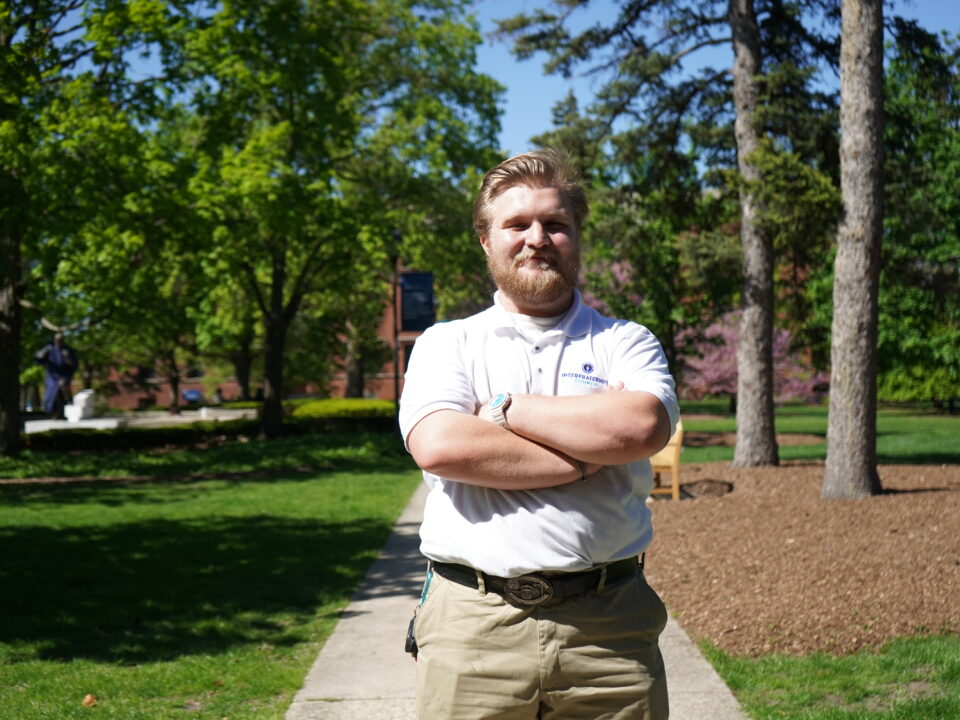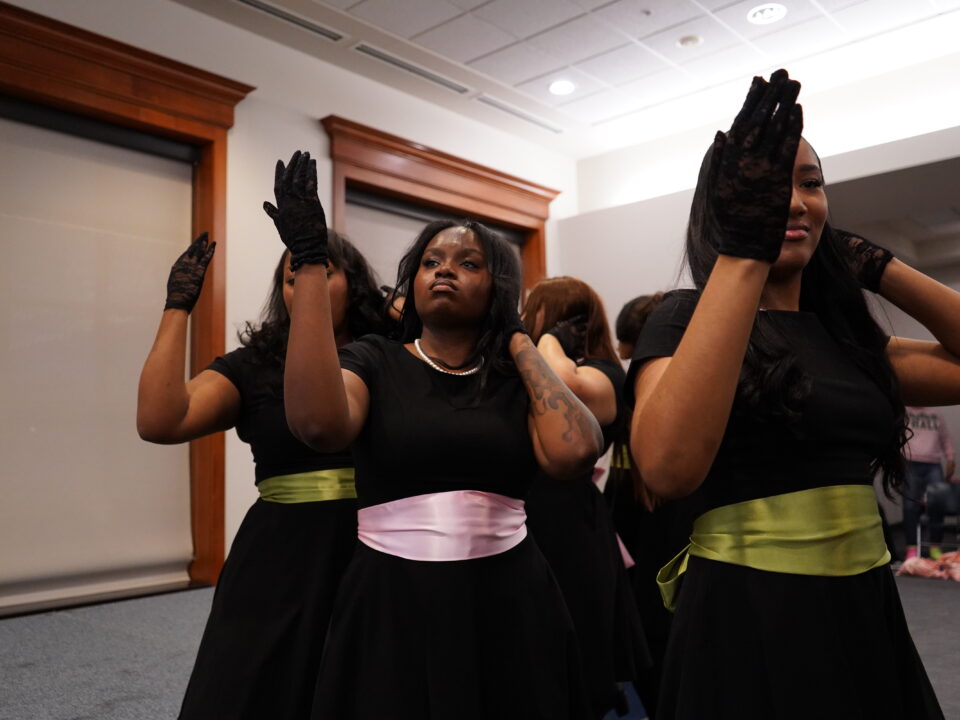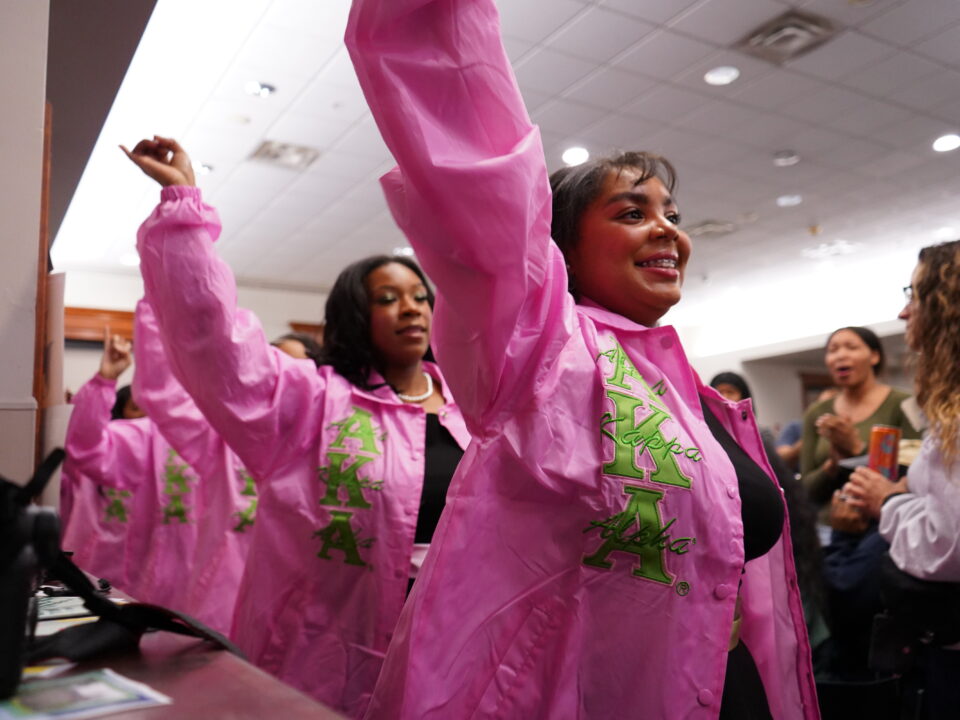EU campus weighs in on safety measures in place after fatal Michigan State shooting
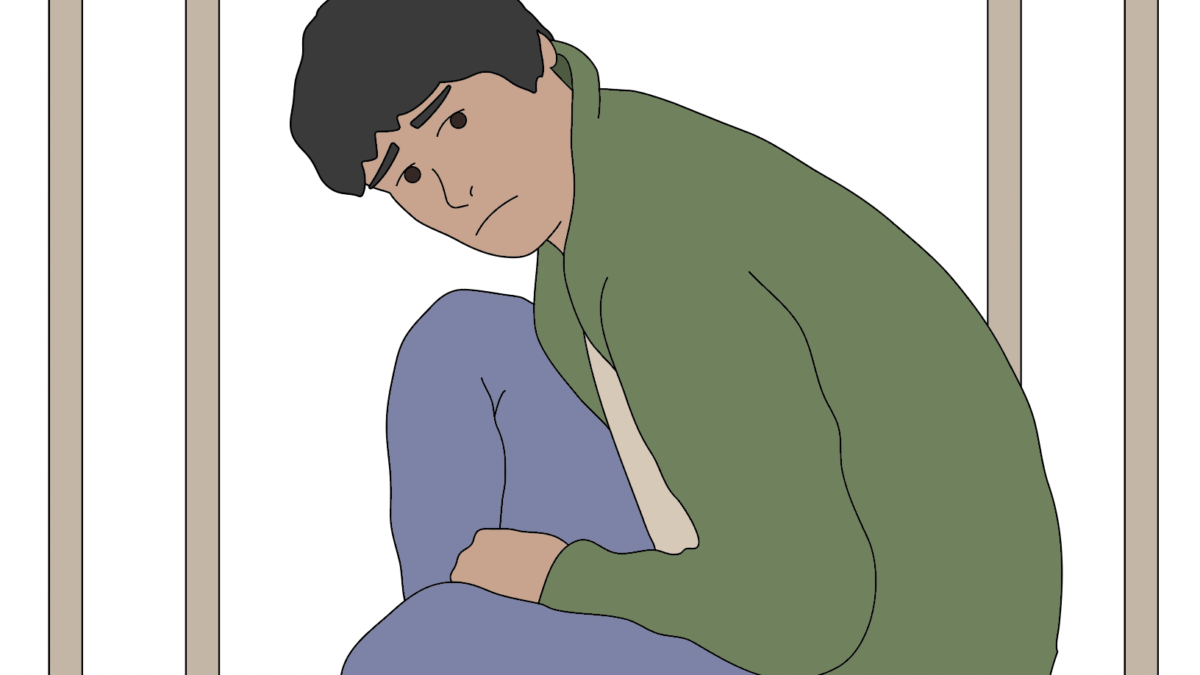
When students received an Elmhurst University alert on April 21, 2021, indicating a potential active shooter threat, fear consumed the student body.
“I remember the first moments of this lockdown vividly,” EU senior Grace Wadsworth told The Leader. “The moment I got the notification on my phone that there was suspicion of an active shooter, my first thought was ‘not again.’”
Wadsworth was a student at Dixon High School in Dixon, Ill. when a gunman opened fire near the gym, where graduation practice was underway on May 16, 2018.
“I had already survived one school shooting when I was a sophomore in high school, and while there was not any true danger on campus that day in April, the experience of lockdown was traumatic enough,” Wadsworth said. “Especially as all I could think about was the time I had spent in lockdown three years beforehand when there was an actual gunman.”
Another student, Emma Byrne, also recalled the frightful experience of that day; Byrne was in her dorm room, located on the first floor of Cureton Hall.
“I’ll never forget how my heart dropped when I heard a knock on my door,” said Byrne. “Luckily, it was the police and campus security, but it was scary to open the door and see a police officer standing there with a rifle, even though I knew they were there to keep everyone safe.”
Shootings on college campuses
So far in 2023, there have been seven school shootings reported, the most recent shooting at Michigan State University (MSU) on Feb. 13, where four people died and five were injured.
While the 2021 lockdown at EU wasn’t fatal, it still left a longstanding impact on students on and off campus.
“This is still an incident that I think about often, and I think that it is one that the Elmhurst community can, and has, learned a lot from in order to plan for the very real possibility that the next time we have a lockdown, we won’t be so fortunate,” said Wadsworth.
John Escalante, executive director of the department of public safety on campus, took the recent events at MSU as a reminder that no matter what, preparation is key to staying safe during these threats.
“The tragic and senseless shooting at Michigan State University is a reminder that we need to be prepared as best as possible to mitigate the chances of a violent act on campus, as well (as) knowing how to respond to a potential active threat,” said Escalante. “As a campus community, we all play a role in keeping our campus safe.”
Escalante notes the important practice of if you see something, say something. If you see concerning behavior on campus, call Public Safety at 630-617-3000, or make reports on their website. To access the links to report behavior, students can utilize the Public Safety website.
The aftershocks of this event rattled the Elmhurst community at large but also left a lasting impression on President Troy VanAken, for which the matter hit close to home.
“I have a niece who is a junior at Michigan State University and feel a similarly connection to and responsibility for the safety of Elmhurst students,” said VanAken.
Both VanAken and Escalante discussed the importance of the FBI’s “Run, Hide, Fight” approach.
“When my niece texted me during the incidents on her campus, I encouraged her to adopt the FBI’s “Run, Hide, Fight” approach for active shooters,” said VanAken.
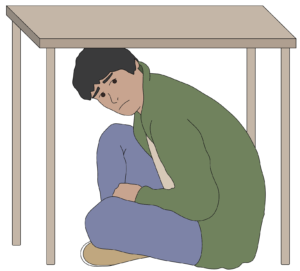
Graphic by — Abbey Mark
Safety measures on EU’s campus
Escalante appreciates some of the measures that EU has taken to improve campus safety.
“Here we are fortunate that all classrooms and conference rooms have inside locking mechanisms that allow those in the room to lock and secure the door (Hide),” said Escalante. “Then occupants should start placing barricades at the doorway entrance.”
While all classrooms have locking mechanisms, some locations on campus do not have this feature.
Most notably, the study rooms in the library do not lock, leaving students vulnerable if found stuck during an active-shooter threat.
Escalante encourages students to spend time reviewing the Public Safety webpages, which have all the information on campus safety. He also encourages students to sign up for EU alerts, where students and staff receive real-time updates.
“Communicating the threat and providing timely updates is key to minimizing harm to our community,” said Escalante.
What resources are available to the campus community?
One of the many resources EU offers is TAO (Therapy Assistance Online), an online mental health platform that is free and accessible for those on campus.
An email was sent to students on Feb. 17, reminding them of all the counseling services that the school offers for those who may be stressed or hesitant to return to campus.
This self-help platform is available 24/7 to the campus community. Those interested can access TAO from the EU portal with their EU email, e-number and password.
Amy Swarr, director of counseling services at EU, discussed TAO and its benefits for students.
“TAO has many modules on topics related to college students’ mental health,” said Sawrr. “For example, modules on stress management, how to deal with depression, anxiety and trauma, coping with panic attacks, healing after a break-up, self-care, and financial management strategies.”
Swarr continued, “There is a mindfulness library as well as built-in practice tools such as logging and journaling.”
Campus fears and anxieties
Some students’ main anxieties and fears come from EU’s proximity to Elmhurst’s public spaces. While EU students appreciate it, they note that it can provide the biggest sense of danger when it comes to anyone being able to easily access campus.
“I think the biggest danger on EU campus is the fact that since it is an open campus with such strong connections to the community it is impossible to monitor who is coming on and may be a danger, both physically with a weapon or violent intentions, or socially,” said Wadsworth.
Wadsworth continued, “ I am aware of many issues this campus has had in the past year with members of religious organizations trying to recruit students in an unhealthy and harmful way.”
“Ever since the mass shooting at Michigan State University, I couldn’t help but think how easy it is for someone who is armed can enter several buildings on campus and target people there,” said EU senior Evenlinn Sanchez.
Sanchez continued, “As someone who comes from a CPS high school whose classroom doors were always locked during lessons, I can’t help but compared my experience on campus as sit in one of the classrooms on the first floor of the Schaible Science Center with my back facing an open door.”
How can Elmhurst improve?
While students commended EU on the practices already put in place, there is a desire for further improvement to make the campus feel safer.
“Occasionally sending students reminders of a shorten down version of the safety procedure via email or text, perhaps highlighting the most relevant and important information,” said Sanchez. “I know they have it posted on the walk-in rooms around campus, but who will actually look through it, especially when the occasion actually happens.”
Sanchez continued, “I think locking classroom doors as they do for labs will be a start to increase safety on campus. It may be an inconvenience to keep letting late students in, but keeping everyone safe and alive is far more important.”
Wadsworth mentioned some tiny steps that EU can take to make students feel safer.
“Ensure that the streetlights on the sidewalks and parking lots work and encompass the needed area completely,” said Wadsworth. “Even if having light doesn’t really stop danger, it definitely makes students feel safer.”
President VanAken assures students that Elmhurst University has done everything it can to make sure that the campus is a safe place for the community to come together and learn.
VanAken is proud to have a strong public safety office at EU, as well as close ties to the Elmhurst police and fire departments.
“While risk can never be eliminated, we can significantly reduce it by being prepared and working together,” said VanAken.

